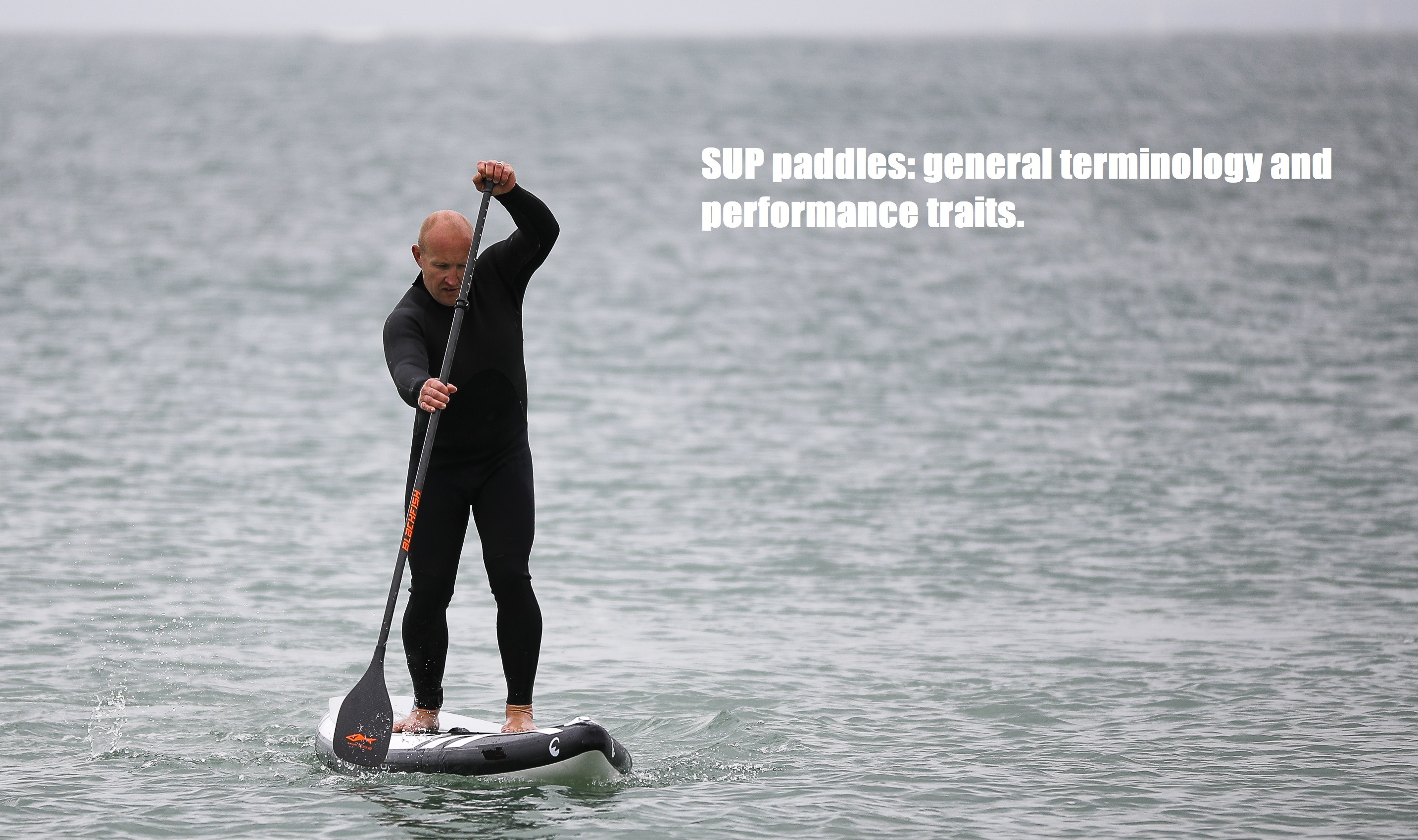SUP paddles are your defining piece of equipment. More so than actual SUP boards. Yet often paddles are overlooked when any extra cash should be used to purchase a better type. Being your means of direct water contact and propulsion your stand up paddle board paddle should be an efficient ‘engine’. With something cheap, you’re more likely to damage joints, muscles and ligaments whilst losing enjoyment of the actual sport. Cheap paddles will often flex too much and be less efficient. Having some knowledge of SUP paddle design can help when choosing a new type.
Fixed shaft SUP paddles – the most efficient type of SUP paddle with the least amount of moving parts. Cut to length fixed shaft paddles are user specific.
Adjustable two piece paddles – a telescopic top section allows different lengths to be achieved. A good option is swapping between boards or if there’s more than one user.
Adjustable three piece SUP paddles – designed with traveling in mind the middle and top sections break away from the paddle blade for easy storage. The top section, when coupled up, can be adjusted as per a two piece.
Handle – usually a palm grip (more oval) or T-grip this is the bit you hold. Personal preference is mostly down to which style you choose.
Paddle shaft – the middle section of the paddle. These can be rounded or oval for a firmer grip which can enhance paddling performance.
Paddle blade – the part that dips into the water and gives power/forwards momentum.
Blade face – the part that faces towards the paddler.
Paddle blade rake – how much angle of attack there is. More rake means a further ‘reach’ is needed versus less rake which can see quicker, shorter strokes.
Dihedral – a spine that runs through the paddle blade (sometimes on the face, sometimes on the back, sometimes both). Incorporated into the design to aid paddling efficiency and reduce blade ‘flutter’.
Blade size – this refers to the overall surface area measurement of the paddle’s blade. Narrower for higher cadence stand up paddling or wider for slower, more powerful strokes. High performance paddlers tend to favour narrower blades. Heavier riders may choose a wider type.
These are just the basics surrounding SUP paddle design. There are more points to consider, such as manufacturing materials and how this’ll affect performance. If you need a hand with SUP paddles then get in touch for more info.
For even further SUP knowledge check out our knowledge page here.

